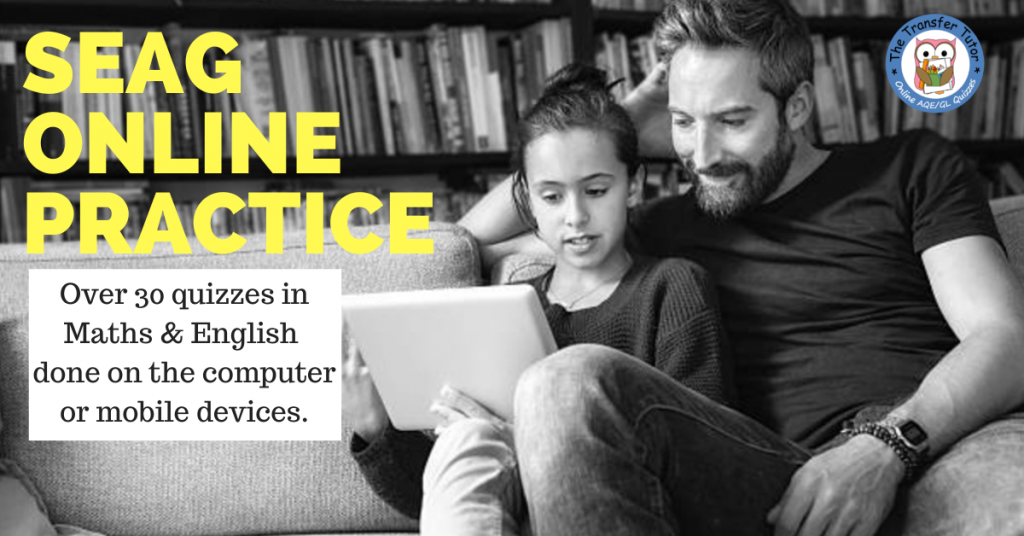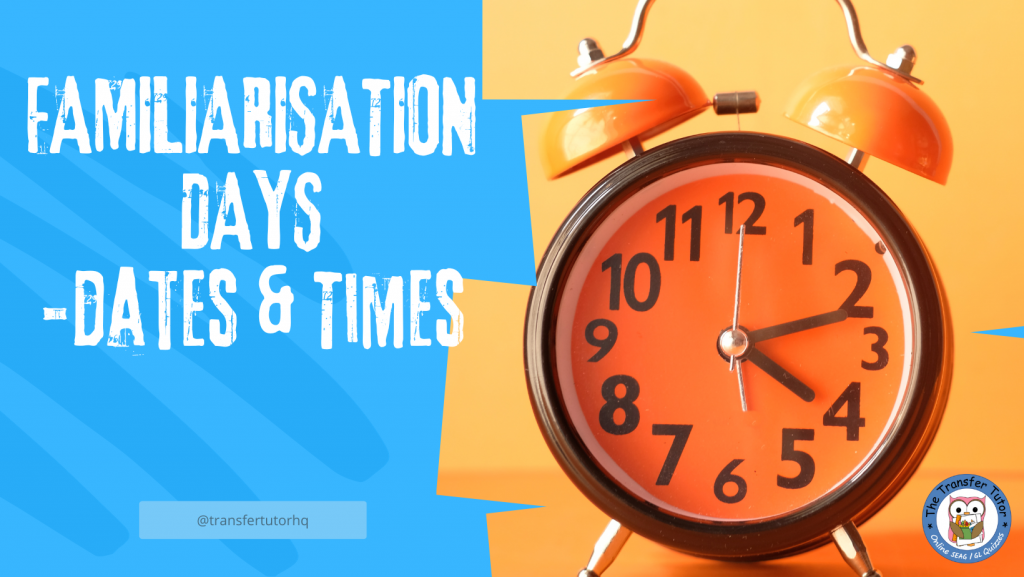
It’s about this time of the year that the grammar schools will run familiarisation days for all the P7s who will be arriving to sit the SEAG tests. This is the first year of the SEAG test so for this reason, and others, it’s important to make an effort to attend or perhaps consider sending the child with a friend or relative if it’s not possible to make it yourself.
It’s a useful day and here’s a run down on my advice and experiences from previous years.
Getting familiar with the logistics

Firstly, these days are fabulous and a great dry-run to make sure you’ll know where to go on the big day, how far the journey will be from home, where you’ll park, what door you’ll go in etc. Whilst you may think that these are small things, trust me they are invaluable.
With one of my kids, I remember turning up at Ben Madigan (BRA prep school and not the right place) for the familiarisation day and then realised I hadn’t a clue where BRA actually was, so ended up breaking the speed limit down the Antrim Road (don’t come for me because in hindsight that was impossible during rush-hour) and turned up late and frazzled – only to realise I was STILL in the wrong place and should’ve been at RBAI in the centre of Belfast! It’s funny looking back but can you imagine if that was the actual test day?
What to wear
There are always a number of questions about what to wear and most schools will indicate on the letter you receive if they prefer the kids to turn up in their uniform or casual clothes, so depending on the grammar school, you should go with their recommendation. The same question exists for the real test and again most schools will indicate a preference for what they would like the child to wear.
In general, I feel that when the child puts on their uniform they also put on their ‘school head’ but then there’s an argument for the child to be more comfortable – so perhaps the best compromise is to wear their primary school’s PE kit (still uniform but comfy).
SEAG suggest that uniform is best but it’s not mandatory.
What Parents / Guardians Should Expect

You should most definitely expect a very warm welcome with a lot of smiles and happy people trying to reassure you that all will go smoothly. This is only a familiarisation day and the school will be doing everything in their power to put you at ease so don’t be worrying.
At the start, everyone will generally gather in the main assembly hall and all the kids will be assigned a number or grouping so that they can easily be called in sections to visit the room where they will sit the test. After the children have left for their rooms, the principal will usually give the parents a presentation (or talk) to explain the process for the day of the SEAG test days, for example:
- Time to turn up on the day of the test
- What to do if you are late
- Their own school’s criteria for admission
- Where the parent must stay when the SEAG test is happening (on or off campus).
If you’re lucky, you’ll also get a cup of tea or coffee and maybe a biscuit.
This is the perfect opportunity for any burning questions you might have that haven’t been answered yet.
What The Child Should Expect
After turning up, the child has to register and they’ll be given a number or a section so they know where they will be going when that group is called.
When that happens (group called), the child will leave their parents (usually quite merrily) and follow the teacher or prefect to their test room. This is a great opportunity for them to get a handle on how the test day is going to feel and ensures that they’re familiar (hence the word familiarisation) with all the surroundings. As well as seeing their test room, they will:
- Be able to see the setup of the desks and who else will be in the room with them
- See where they will be sitting exactly e.g. near a window, at the back or front
- Get a sense of how cold or warm the room is so they may want to wear a jumper if cold (although on the test day it could be different)
- Be informed of what they can bring on the day (Pupil Card and a highlighter if they want) and what to do if they need a toilet break or extra paper
- Do a brief test to give them some experience of what the real test day will feel like (this also gives them something to do whilst the principal is talking to the parents)
- Have a chance to ask any questions
- Be told about the rules of silence before the test and afterwards etc.
Overall

Generally everyone usually leaves the familiarisation day with a sense of ease and feeling more informed. There’s also the feeling that this is now very real and imminent but at this stage I bet everyone is keen to get on and show how amazing they all really are.
Good luck to everyone and I hope you have a great familiarisation day, embrace the experience and even enjoy it.
Blog – Familiarisation Dates We Know So Far
The grammar school (assessment centre) will contact you directly to advise of your date and time (by email or letter) so keep an eye out on your junk folder if you don’t see it – but in the meantime if you want to check if the date is already known (so you can keep the date free), you can have a look through this handy blog – Familiarisation Dates 2023.
More about The Transfer Tutor (Multi-Award Winning Online Quizzes)

The Transfer Tutor’s Online Quizzes provide a fun and interactive way to learn and practise Maths and English questions which are directly aligned to the new SEAG (replacing AQE and GL) specification.
There are many, great features including (but not limited to):
- Quizzes broken down into specific English and Maths topics, to allow for focused learning and the ability to hone in on areas of weakness.
- Mobile friendly and works on any internet device.
- ‘Hint’ option supports the child’s learning. For example, in question about calculating area of an irregular shape, the hint will say, “Break it into two” – enough to keep the child going but teaching them for future, similar questions.
- The Leaderboard at the end makes the child feel like they’re playing a game and having friendly competition.
- Good use of colour and graphics which makes it exciting.
- Parents receives a progress email at the end to let them know how their child did.
Google Reviews

Check out the Google Reviews to read what other customers felt about The Transfer Tutor.
How To Buy
Simply choose the licence you need depending on the length of time you need access, click on the blue box below (Explore & Compare Licences), pay and then you’ll be off within minutes.
For any further questions, please contact me or check out the Frequently Asked Questions page.
All of these are a one-off payment until they expire – so no additional costs.

Try It Out:

To give you a feel for the quizzes, why not try out the quick fire free quiz by clicking on the button below (no need to register or pay, so don’t worry). This will hopefully let you see how the questions work – or more importantly, let you see if this is something that would inspire and encourage your child to learn.
Social Media Links – Keeping Up To Date

Follow or like The Transfer Tutor on your social media channel of choice and ensure you never miss a beat with the whole transfer process, handy tips, advice, special offers and competitions.
Click below for your preferred channel or search for @TransferTutorHQ wherever you are.
Free Facebook Group

You may have read in the reviews about people referring to the Facebook Support Group and this is certainly a great place to keep informed, ask questions, get support and keep up-to-date with anything happening in the transfer space.
It’s free to join but please ensure you have a genuine Facebook profile picture (ghost pictures are not approved as not deemed authentic) and then simply click here and answer the simple questions -> Join Facebook Group.



